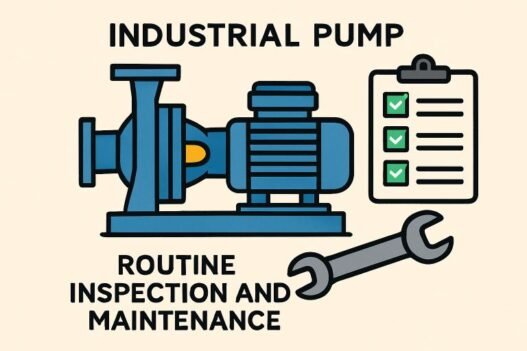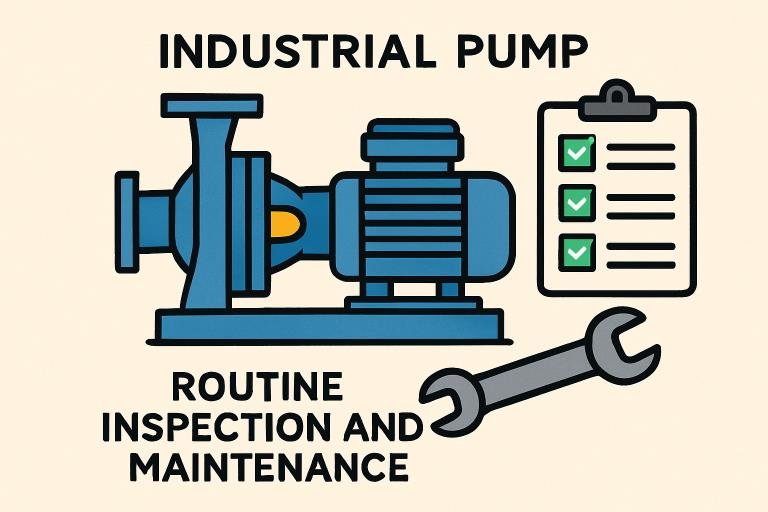Key Takeaways
- Regular pump maintenance significantly increases equipment longevity and operational efficiency.
- Neglecting routine upkeep leads to unplanned outages and higher repair costs.
- Integrating innovative technologies, such as IoT and AI, can enhance maintenance predictions and reduce unnecessary expenditures.
Industrial pumps serve as the backbone for a wide range of sectors, including manufacturing, chemical processing, and municipal water treatment. Unplanned pump failures can halt production, disrupt water supply, and incur significant losses. For this reason, a robust preventative maintenance program is essential. By proactively caring for critical equipment, such as the C&B Equipment Roper gear pump, organizations can sustain reliable operations and minimize costly downtime. Preventive maintenance is a strategic investment that enhances pump efficiency, extends equipment lifespan, and prevents large-scale interruptions. It ensures compliance with safety regulations, improves resource allocation, and provides dependable service.
Understanding Preventative Maintenance
Preventive maintenance is a scheduled, proactive strategy designed to keep equipment in optimal condition. Rather than waiting for failure, this approach emphasizes inspection, cleaning, adjustment, and minor repairs at set intervals. For industrial pump systems, this means identifying wear patterns, leaks, or misalignments before they disrupt essential processes. The core principle of preventative maintenance is simple: fixing minor issues early prevents major breakdowns later. Many organizations adopt tiered maintenance schedules based on manufacturer guidelines, operating conditions, and the criticality of the pump.
Benefits of Regular Maintenance
- Extended Equipment Lifespan:Through consistent inspection and upkeep, pumps can operate well beyond their expected service life, providing excellent return on investment.
- Enhanced Efficiency:Properly maintained pumps experience less internal friction, draw less power, and achieve optimal throughput rates. This translates to lower energy bills and improved process consistency.
- Reduced Downtime:Proactively detecting minor problems helps avoid unexpected shutdowns. Planned servicing also allows for maintenance during periods of low demand, minimizing disruptions to operations.
According to Machinery Lubrication magazine, routine monitoring and maintenance can cut the likelihood of pump failure in half.
Common Maintenance Practices
- Lubrication:Adequate lubrication ensures that bearings and other moving parts operate smoothly, reducing wear and prolonging equipment life.
- Alignment Checks:Shafts and couplings must be correctly aligned to prevent vibration, noise, and premature component failure.
- Seal Inspections:Examining and replacing worn seals is critical for preventing leaks and maintaining system pressure.
- Vibration Analysis:Regular vibration monitoring helps technicians detect imbalances, misalignments, and mechanical looseness before they cause significant damage.
The Role of Technology in Maintenance
Modern maintenance approaches utilize the Internet of Things (IoT), artificial intelligence, and big data analytics to monitor critical pump metrics continuously. Smart sensors track vibration, temperature, pressure, and flow rate in real-time. When anomalies arise, AI-driven platforms flag them for immediate inspection or intervention. These predictive maintenance strategies reduce the need for unnecessary physical inspections and focus attention on assets most at risk of failure. Companies adopting digital monitoring report higher mean time between failures and better overall equipment effectiveness (OEE).
Case Study: Advanced Pump Company’s Maintenance Program
Advanced Pump Company set a new benchmark when it introduced its comprehensive preventative maintenance program in May 2024, serving industrial, commercial, and municipal clients. This initiative provides customized maintenance schedules and routine servicing for over 100 leading brands of pumps, motors, and compressors. Clients benefit from both on-site and in-shop repair options, allowing for maximum scheduling flexibility and minimal operational impact. The program supports longer equipment life, improved efficiency, and lower operating costs for its participants.
Implementing a Maintenance Schedule
Developing an effective maintenance plan starts with a detailed assessment of each pump’s function, workload, and historical performance. Maintenance intervals should be tailored to manufacturer recommendations, environmental conditions, and the criticality of each pump within plant operations.
- Evaluate each pump’s duty cycles, load, and operational environment.
- Design maintenance intervals based on machine hours, calendar schedule, or real-time condition monitoring data.
- Train all relevant staff on site-specific protocols, safety procedures, and proper documentation of maintenance activities.
Structured planning ensures that each piece of equipment receives the appropriate level of attention, avoiding both over-servicing and neglect.
Conclusion
Committing to preventative maintenance for industrial pump systems is vital for long-term operational resilience and cost control. With regular servicing, the integration of intelligent monitoring technologies, and adherence to best practices, businesses can ensure reliable pump performance and maximize the value of their capital investments. Embracing these principles ensures uninterrupted production, lower repair bills, and ultimately, a stronger bottom line.













